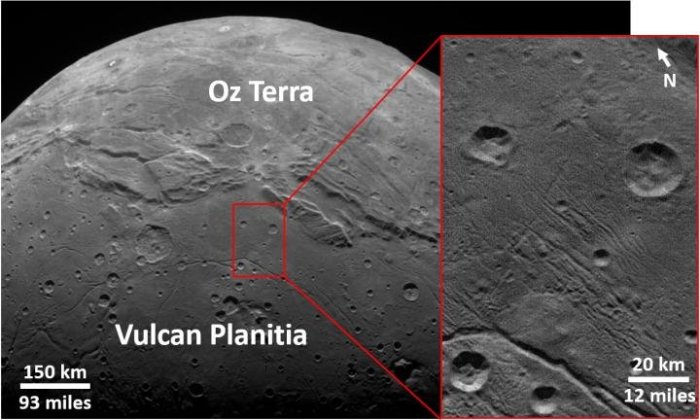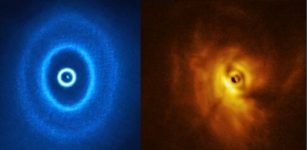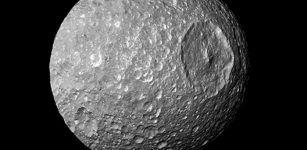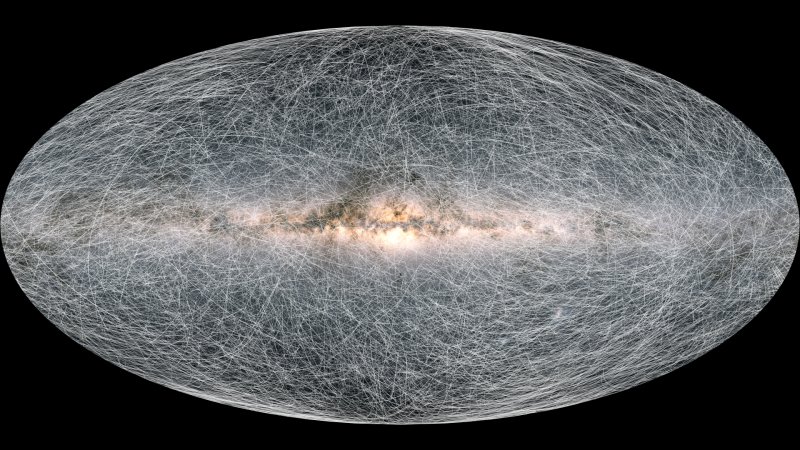Charon Shows Small Kuiper Belt Objects Surprisingly Rare
Eddie Gonzales Jr. – MessageToEagle.com – Using New Horizons data from the Pluto-Charon flyby in 2015, a Southwest Research Institute-led team of scientists discovered a surprising lack of very small objects in the Kuiper Belt.
The evidence comes from New Horizons imaging that revealed a dearth of small craters on Pluto’s largest satellite, Charon, indicating that impactors from 300 feet to 1 mile (91 meters to 1.6 km) in diameter must also be rare.

The Kuiper Belt is a donut-shaped region of icy bodies beyond the orbit of Neptune and this research provides new insights into how the solar system originated.
“These smaller Kuiper Belt objects are much too small to really see with any telescopes at such a great distance,” SwRI’s Dr. Kelsi Singer, the paper’s lead author and a co-investigator of NASA’s New Horizons mission, said in a press release.
“New Horizons flying directly through the Kuiper Belt and collecting data there was key to learning about both large and small bodies of the Belt.”
Because Pluto is so far from Earth, little was known about the dwarf planet’s surface until the epic 2015 flyby. Observations of the surfaces of Pluto and Charon revealed a variety of features, including mountains that reach as high as 13,000 feet (4 km) and vast glaciers of nitrogen ice. Geologic processes on Pluto have erased or altered some of the evidence of its impact history, but Charon’s relative geologic stasis has provided a more stable record of impacts.
“A major part of the mission of New Horizons is to better understand the Kuiper Belt,” said Singer. “With the successful flyby of Ultima Thule early this year, we now have three distinct planetary surfaces to study. This paper uses the data from the Pluto-Charon flyby, which indicate fewer small impact craters than expected. And preliminary results from Ultima Thule support this finding.”
Typical planetary models show that 4.6 billion years ago, the solar system formed from the gravitational collapse of a giant molecular cloud.
“This surprising lack of small KBOs changes our view of the Kuiper Belt and shows that either its formation or evolution, or both, were somewhat different than those of the asteroid belt between Mars and Jupiter,” said Singer. “Perhaps the asteroid belt has more small bodies than the Kuiper Belt because its population experiences more collisions that break up larger objects into smaller ones.”
Written by Eddie Gonzales Jr. – MessageToEagle.com Staff Writer










